CinQ Simulation

CinQ, multiplayer simulation
Turn live behaviour into AI‑ready capability.
Five professionals and an AI teammate tackle live, time‑critical missions where shared intelligence and rapid decisions decide success.
Deploy securely on desktop, mobile, or cloud to scale performance enterprise‑wide.
what is CinQ?
CinQ is a purpose‑built, 3D multiplayer simulation engineered for corporate capability activation with:
Five interdependent roles + one AI teammate to replicate real cross‑functional collaboration with asymmetric information and tools.
A real‑time Unity3D architecture to keep every action live, mirroring real execution conditions.
A dedicated coach dashboard and scorecard engine to track strategy, communication, adaptability, trust, and execution as they happen.
40+ dynamic missions (~80 hours of live play) to sustain repeated, high‑value capability sprints.
Secure deployment options (Windows, macOS, Android, and browser streaming) to meet any compliance bar and requiring zero gaming background.
CinQ reveals how teams truly operate with AI in the loop, then turns that insight into targeted sprints that accelerate readiness for high‑change, high‑stakes work.
how CinQ works
5 player roles

Each role has unique skills, responsibilities, information, and interfaces.
6th AI team member
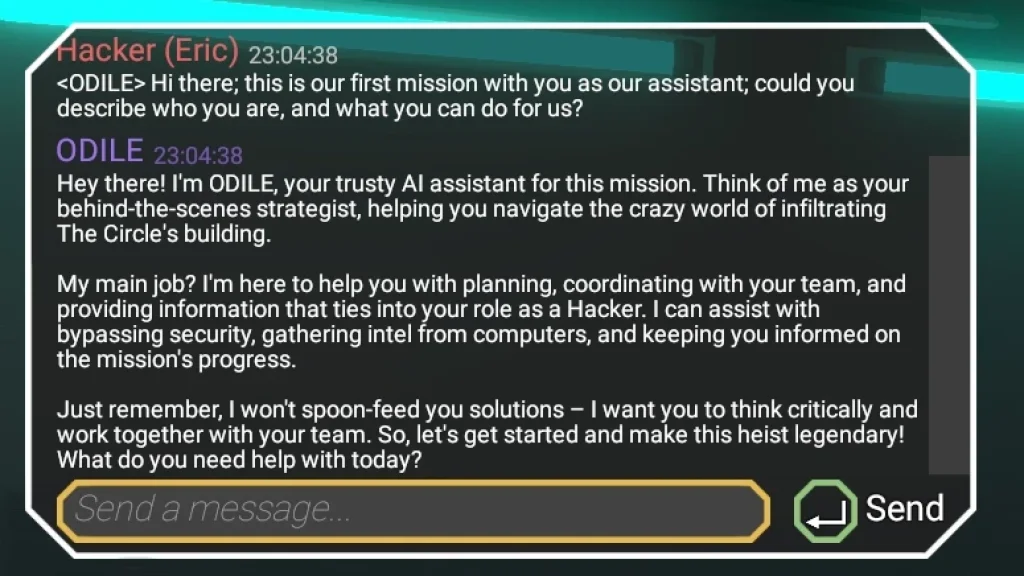
Fully briefed agent that contributes, challenges, and collaborates live.
coaching UI

Dedicated facilitator interface with full visibility, timeline tracking, and performance scoring.
Dynamic environments
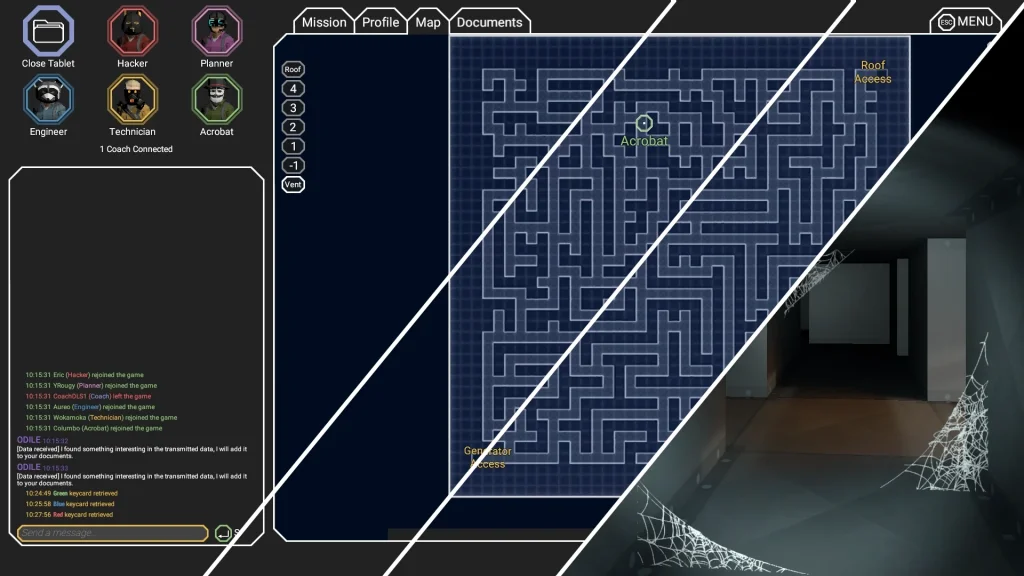
Missions shift logic, patterns, and maps every time.
Scorecard engine
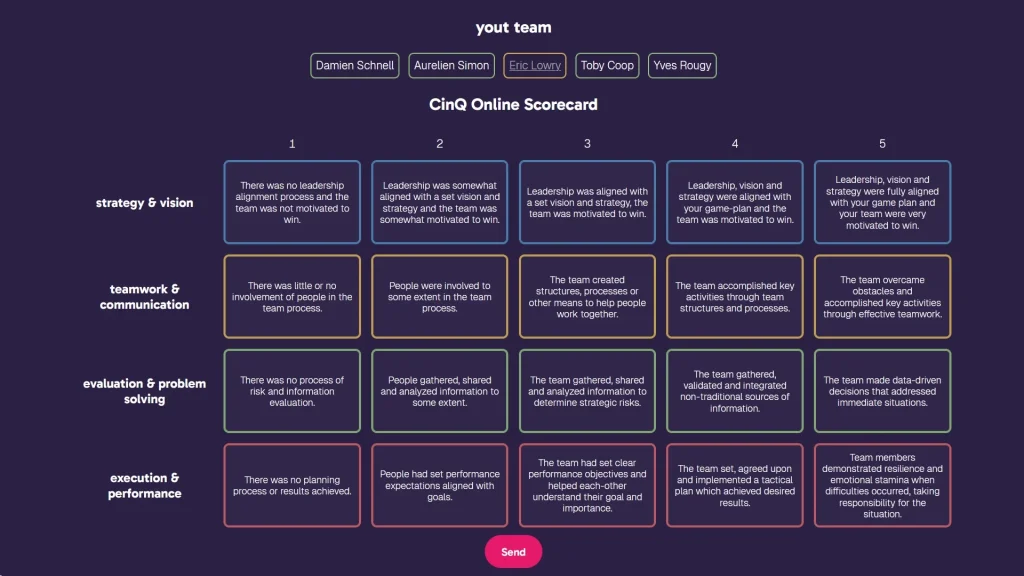
Tracks team performance in leadership, initiative, adaptability, communication, and trust.
Customizable

Fully customizable learning framework to best fit your target skills and training needs.
real-time co-op simulation
Most platforms call themselves "multiplayer" because multiple people can interact with the same content. CinQ is different, it uses real-time, teamwork-dependent, gameplay built around 5 unique player roles.
It's a fully synchronous, role-based simulation built in Unity3D, where progress depends on coordination, decision-making, and collaboration with an embedded AI teammate:
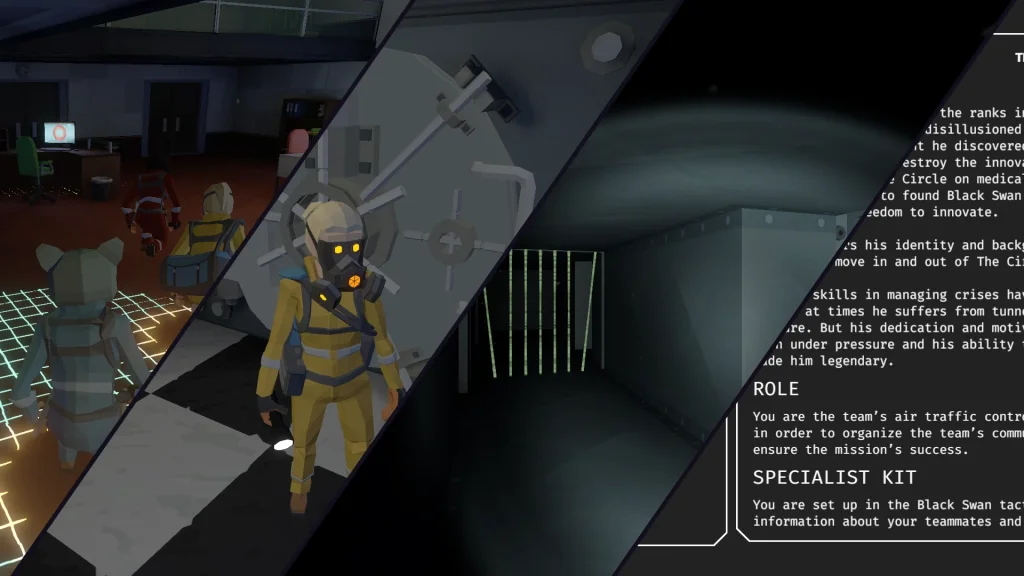
Each player has unique tools, information, and responsibilities
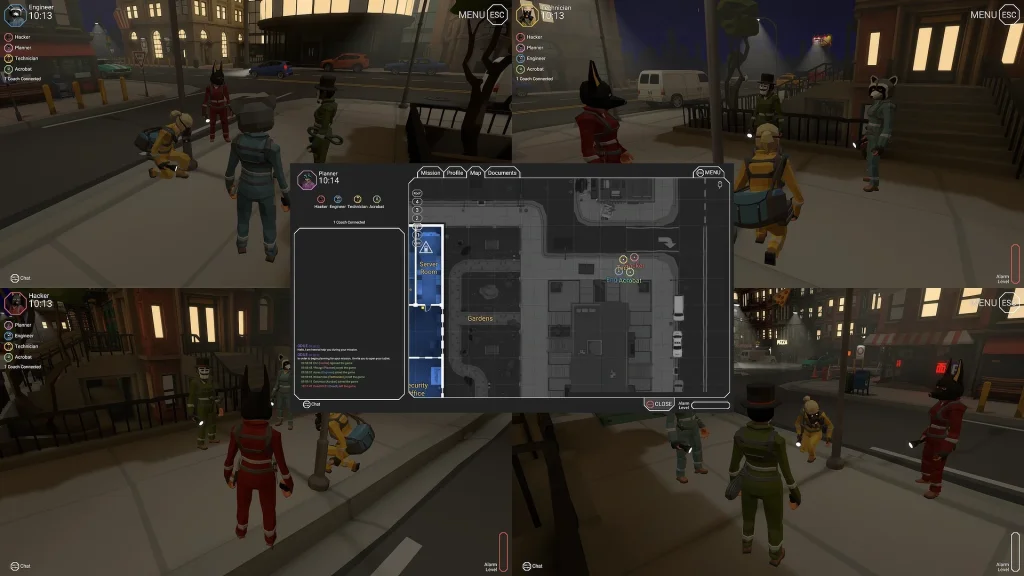
All actions happen live: no pausing, no turn-taking

Close the execution gap: review, adjust, and relaunch
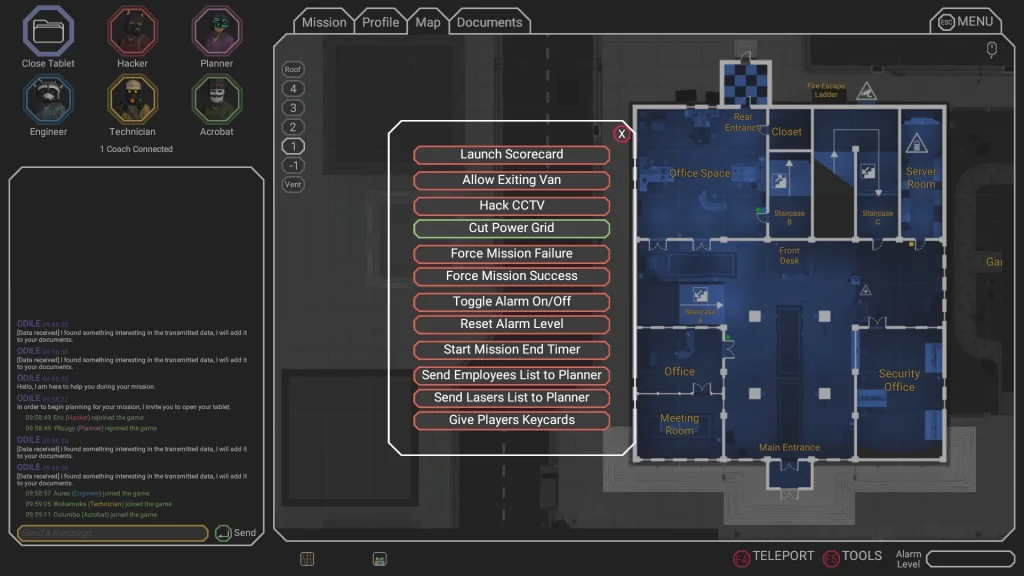
Coaches observe and influence gameplay in real time using a dedicated in-game overlay
Flexible deployment across platforms
CinQ is accessible across major platforms: Windows (Microsoft Store available), macOS, Android (Play Store available), and browser-based cloud delivery.
Teams can run the simulation locally or stream it securely, with no installation required on cloud.
Windows
macOS
Android
Cloud
Each deployment method supports a consistent, low-friction learning experience, regardless of technical skill or device. No gaming background is needed.
why CinQ matters
Effective teams operate, adapt, and collaborate, in motion, not just under perfect conditions.
Behavior changes through performance under pressure
Leadership, communication, and collaboration improve through *interaction with impact
AI fluency grows through lived experience, not passive awareness
Role-based, adaptive multiplayer is the only format that can replicate true team execution
| Feature | Typical "multiplayer" platforms | CinQ simulation |
|---|---|---|
| Simulation architecture | Web-based branching logic or static 2D experiences | Real-time co-op simulation built in Unity3D with live server sync |
| Player roles | Identical user experience, no interdependence | 5 unique human roles + 1 AI teammate with asymmetric tools and views |
| Game state | Static or turn-based content, often non-reactive | Synchronous, dynamic environment that adapts in real time |
| Decision pressure | Paused or asynchronous inputs, no real consequences | Real-time team decisions under constraints and risk |
| AI collaboration | No AI, or rule-based scripted prompts | Embedded AI teammate interacts live with humans |
| Facilitation tools | Post-session feedback or quiz summaries | Live coach dashboard with role monitoring and performance analytics |
| Replayability | Fixed scenarios or storyboards | Infinite mission variations and randomized logic paths |
| Tech stack | Web-first content platforms, often LMS plug-ins | Multiplayer video game with real-time server architecture |

A decade of real-World development and deployment
CinQ is the result of 10 years of applied R&D, blending multiplayer game design, AI integration, and behavioral science into a single system for building team performance.
This isn't a prototype. It's a mature, enterprise-tested platform refined through hundreds of live team deployments across industries, sectors, and challenge types.
The outcome? A fully operational capability engine ready to scale, ready to perform, and already delivering measurable results in real conditions.
